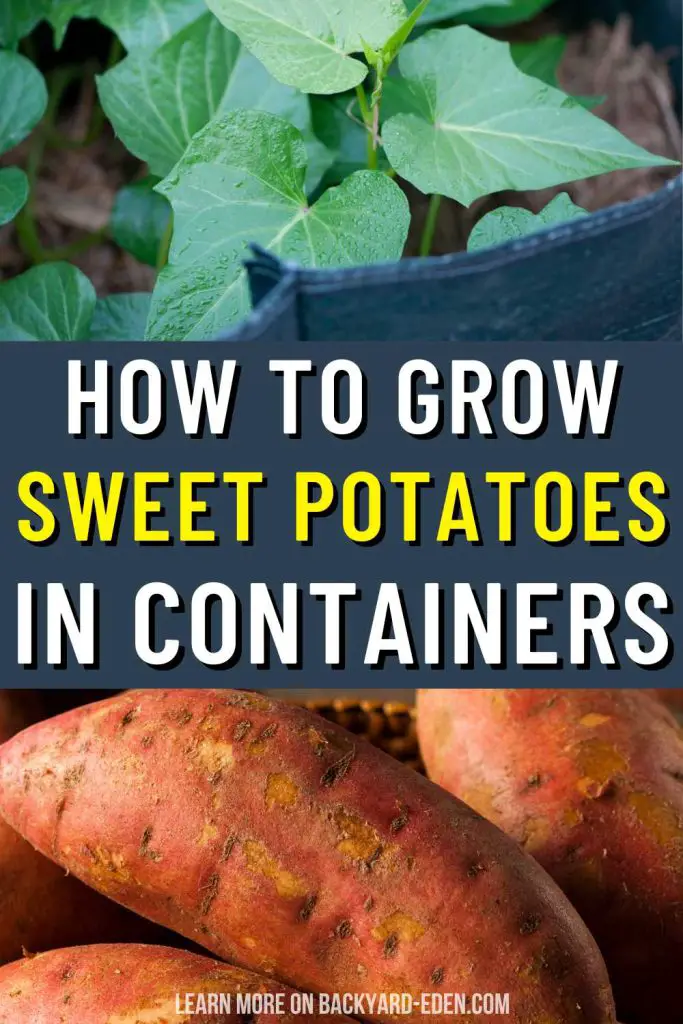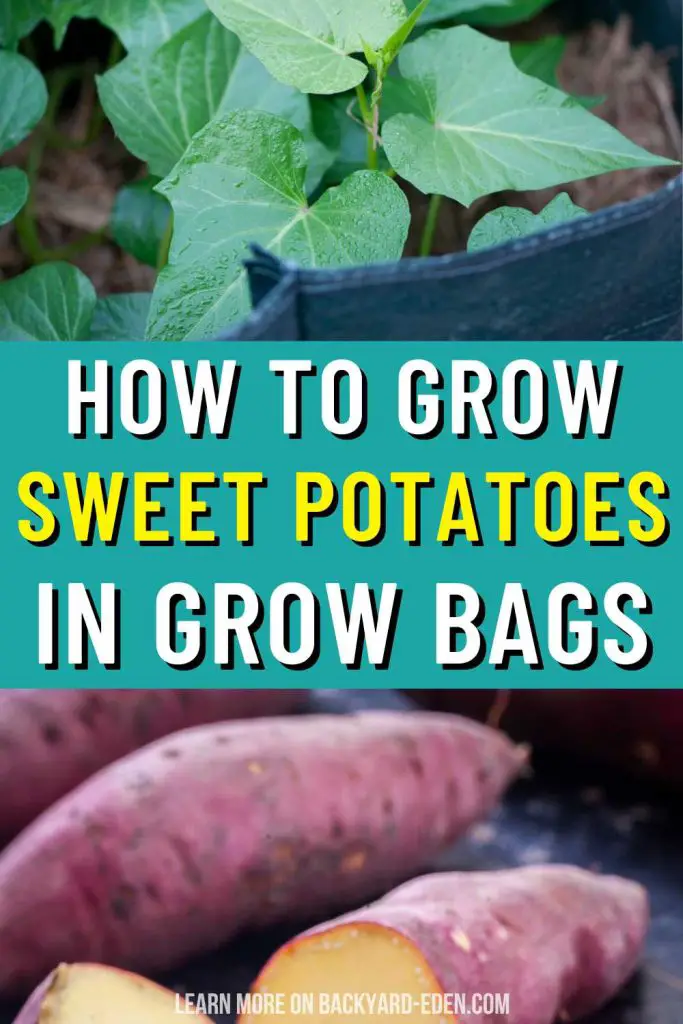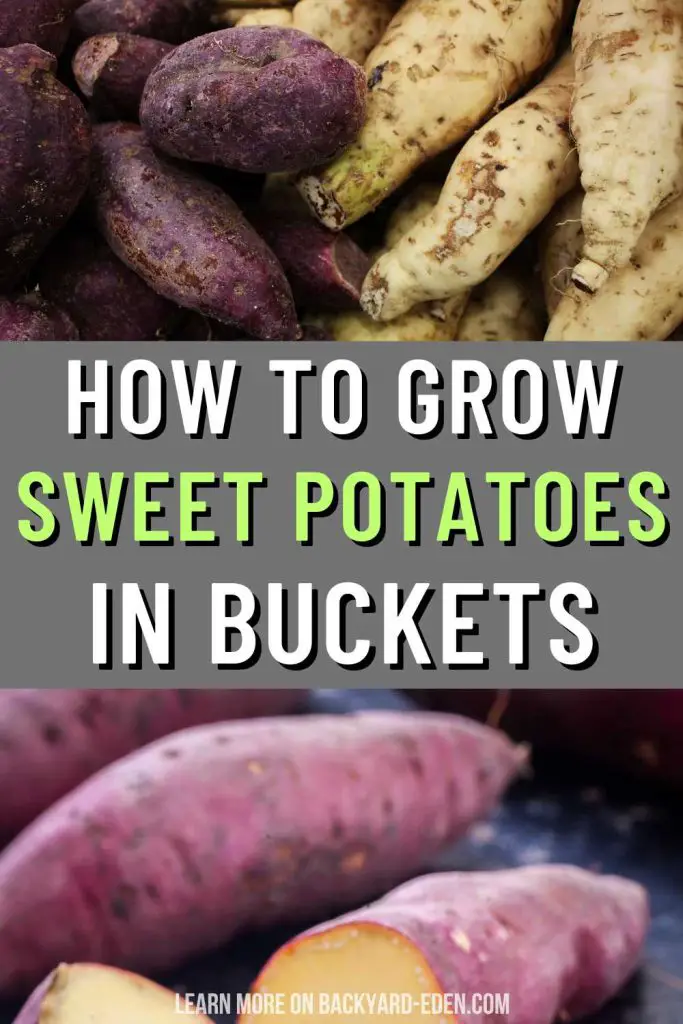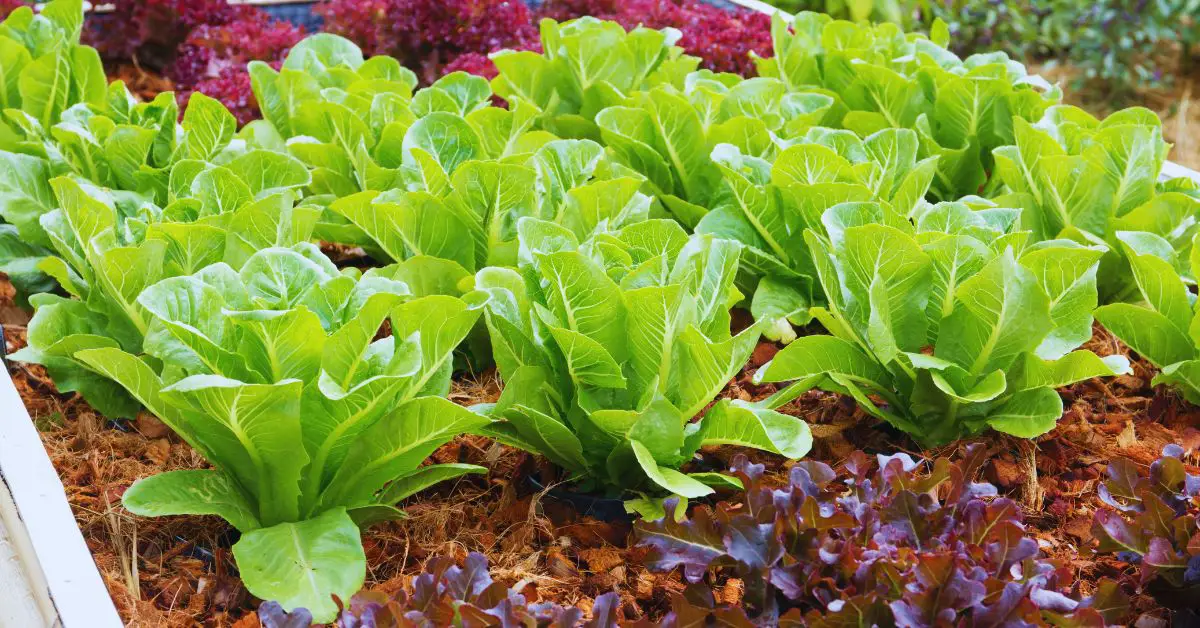Growing Sweet Potatoes
Gardeners around the globe cannot wait until spring every year so that they can plant their spring and summer crops. We have to patiently wait until the threat of the last frost is clear before we can start to plant out our favorite veggies.
Things like tomatoes, peppers, eggplant, squash, and many more cannot take frost but often times we get impatient by setting them out early because we desperately want fresh produce.
These plants are absolute must-haves in your garden each year but I want to challenge you to add another must-have to your list.
Sweet Potatoes! Growing Sweet Potatoes can be rewarding for the home gardener because they are delicious, absolutely packed full of nutrients and can be used in many ways, and are low maintenance.
In this blog post, you will learn about growing sweet potatoes in your garden.
What is a Sweet Potato?
Sweet potato is a tuberous root vegetable that produces a delicious tuber underneath the soil and delicious leafy greens above the soil on vines. Sweet potatoes are in the same family as the morning glory.
They look like a regular potato more or less but taste more like a carrot. They will vary in sweetness depending on the variety.
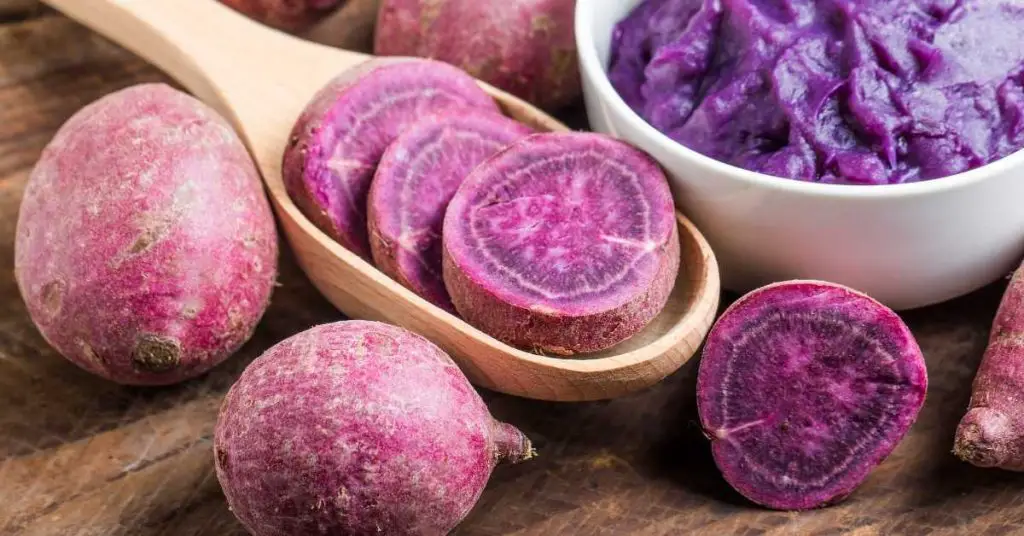
This post may contain affiliate links. Read our full disclosure here.
What is the advantage of growing sweet potatoes?
The humble yet mighty sweet potato is a must-have in every garden no matter what climate or conditions. Every home gardener should give this versatile and delicious veggie a try.
Sweet potatoes are delicious, absolutely packed full of nutrients, and can be used in a number of different dishes. They thrive in sunny locations when other veggies die in the hot summer sun. Here is what you need to know to grow sweet potatoes.
How to Plant Sweet Potatoes
A lot of gardeners start with slips purchased from a local garden center or reputable mail-order source but I start my own from a sweet potato either from the store or one that I grew last year.
Starting your own slips are incredibly easy and there is no reason to spend additional money on them.
How to Start Your Own Sweet Potato Slips
What do I need to start my own slips? First, you need a sweet potato of your choice, a plastic container or cup, and water. That is it.
All you have to do is fill your plastic container or cup with some water and then place your potato in it.
You want to make sure that you change the water every 2-3 days so it doesn’t start to stink or get nasty but other than that it is simple. There is no need to worry about putting the right end in the water because the potato will send the slips no matter what, if you notice that you put the wrong end in, simply flip the potato.
You will notice slips and roots after about a week or so.
When to Plant Sweet Potatoes
If you choose to purchase them or start your own it’s important to plant your slips quickly after they arrive, but wait for warm, settled weather before planting outside.
If the weather is still too cold or your garden is not ready, heel in the slips (loosely plant them) in a temporary location (in a flat or nursery bed) for transplanting later.
Don’t worry if your slips don’t have roots, with good care new roots will develop rapidly. Transplant your slips into the ground outdoors by making a hole 2 to 3 inches deep with your dibber.
Plant the slip in the ground with the leaves above the ground, 10 to 18 inches apart in rows at least 3 feet apart (to make room for the sprawling vines).
Can I grow Sweet Potatoes in a Container?
Growing sweet potatoes in containers is quite easy as well by planting in air pruning bags, root pouches, or pots and trellis the vines vertically. Transplant the slips in the evening, water immediately, and keep the soil moist for the next few days as the plants get established.
Also, it is important to stay on top of watering when growing sweet potatoes in containers as their soil will dry out quickly so water every other day.
How Long Does it Take to Harvest Sweet Potatoes
Sweet potatoes generally need at least 4 months of frost-free growing. Even early varieties need at least 90 days from when the slip is transplanted until the full-size tubers can be harvested so you want to start your slips inside 3 weeks before planting time in your area.
For example, I am in Zone 8a, it is recommended that I plant my sweet potatoes in the middle of June for an October harvest. I plant two separate plantings, once in April and again in June.
I want to have a continual harvest in order to get the most out of my veggie patch.
Sweet potatoes grow vigorously in warm areas and quickly shade out weeds as the season progresses. They have very pretty foliage that makes a very attractive and effective ground cover.

What type of soil is best for sweet potatoes?
Sweet potatoes prefer loose, well-drained soil. If you have clay soil or drainage problems, work in lots of compost and make raised beds or planting ridges 8 to 12 inches high.
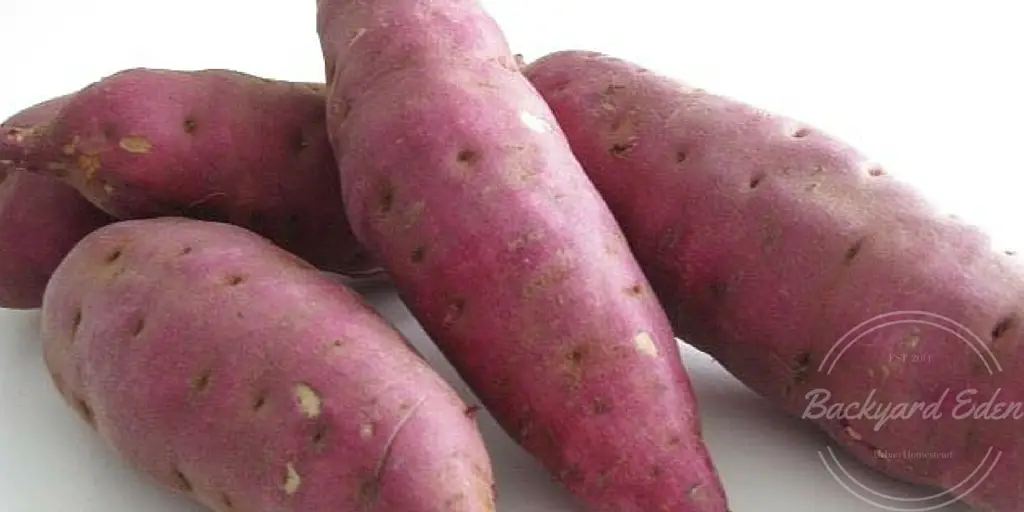
How Often Should I Water Sweet Potatoes
In most areas growing sweet potatoes can yield a good harvest without additional watering after the plants are established, but irrigation will assure a larger harvest and even moisture helps prevent splitting and cracks.
Keep the plants free of weeds until they are established and can shade out the competition. Sweet potatoes produce well even in poor soil but do best with a side dressing of compost for each plant.
This will produce better yields and larger sweet potatoes
Harvesting Sweet Potatoes
You can harvest sweet potato leaves and young shoots for cooking greens at any time during growth. I like to plant a small root pouch near our backdoor with a small trellis for the vines to grow onto so that I can harvest a few leaves for salads for lunches during the week.
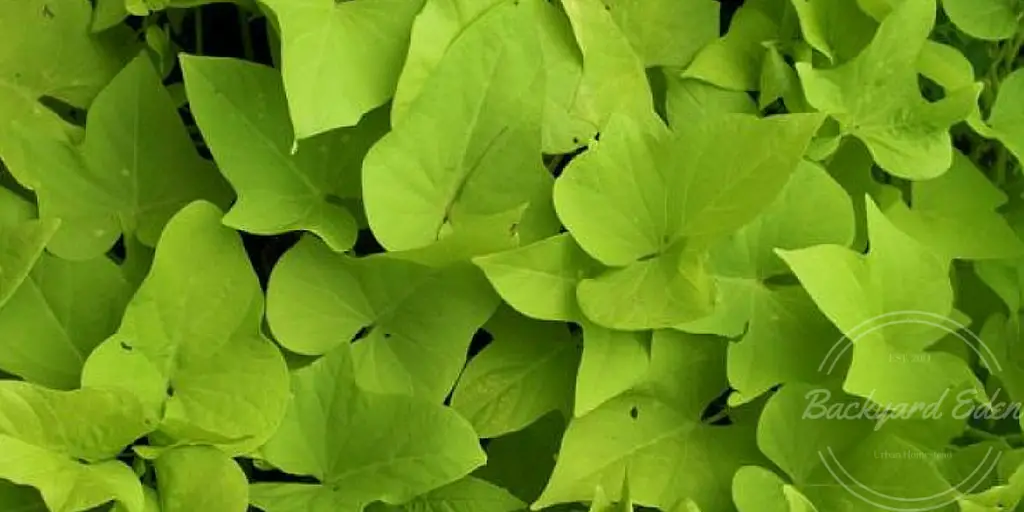
The sweet potatoes are ready to harvest as soon as they reach your preferred size. Try digging one of your plants when your crop reaches the recommended growing time for the variety (generally between 90 and 120 days.)
If the tubers are still too small for your liking, try again in a week.
It’s best to harvest on a sunny day when the soil is not too wet. Begin by pulling aside the vines so you can see where you’re digging.
Using a garden fork (or a shovel or spade), begin digging 12 to 18 inches away from the center of the plant to avoid damaging the sweet potatoes. Go straight down about 6 inches, then angle toward the center and gently lift the potatoes out of the ground.
Separate the sweet potatoes and let them dry in the sun for no more than one hour. Handle freshly dug sweet potatoes gently to avoid bruising.
How Long Can Sweet Potatoes Stay in the Ground
Sweet potatoes left in the ground will continue growing until frost, although growth slows as the weather cools. It is almost impossible to successfully harvest all of your sweet potatoes without missing some tubers.
Any tubers that are missed will send up new shoots in the next growing season for another harvest. For best storage quality, harvest sweet potatoes before the soil temperature drop below 55 degrees F.
In Conclusion
If you need some ideas on how to compost using free local resources (How to compost using free local resources), which weeds are good to have in your garden (Top 5 Weeds to Grow), starting seeds indoors (Starting seeds indoors,Start seeds indoors pt 2) or some ideas on how to plan your garden (Planning your garden) check out our other articles and make sure to subscribe to our newsletter.
